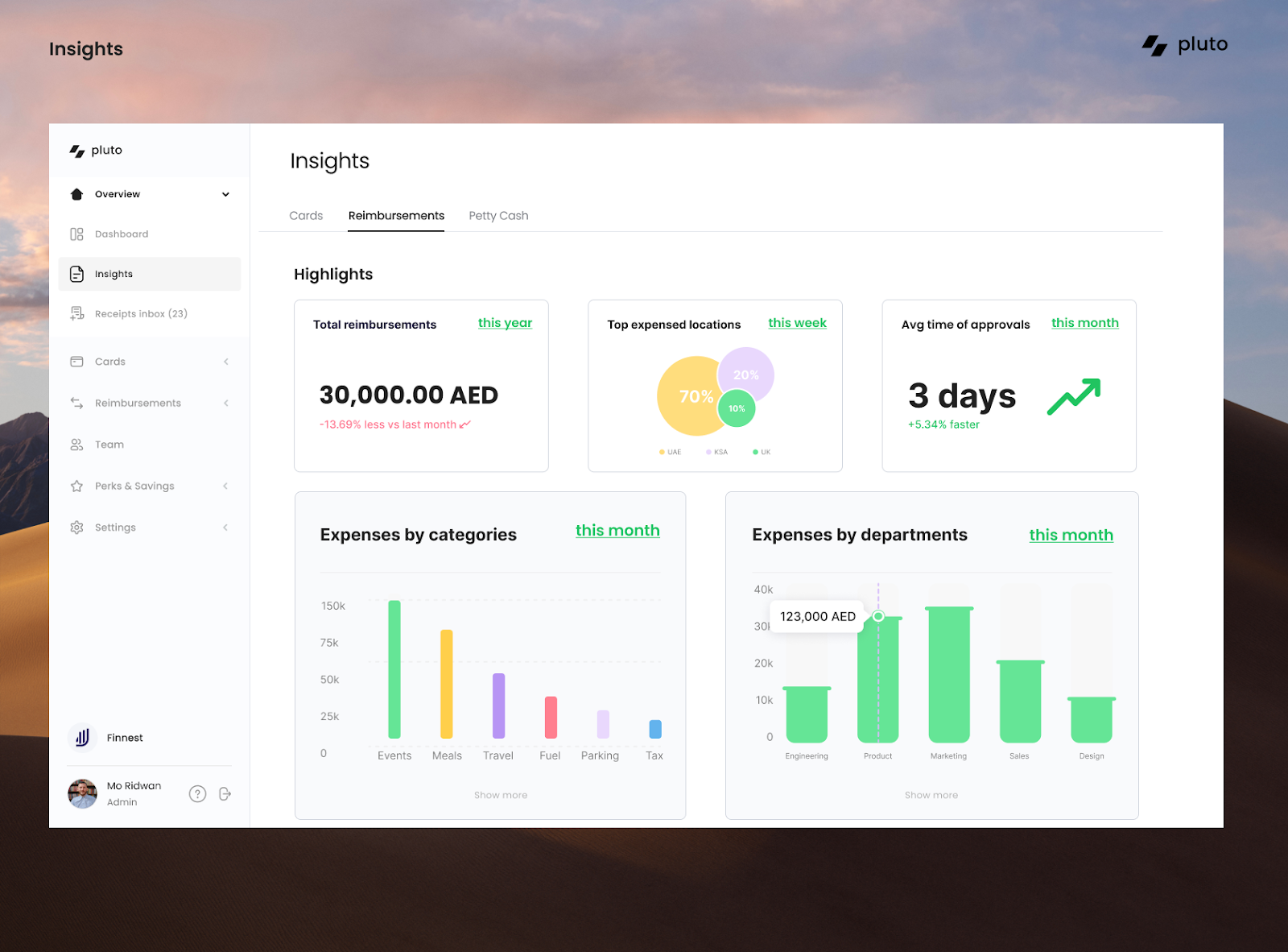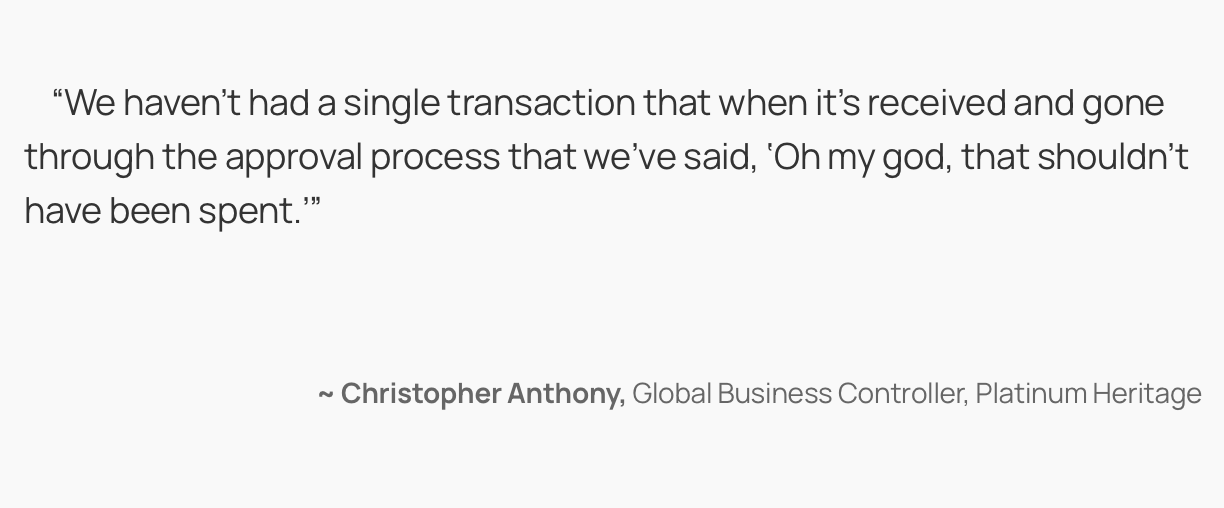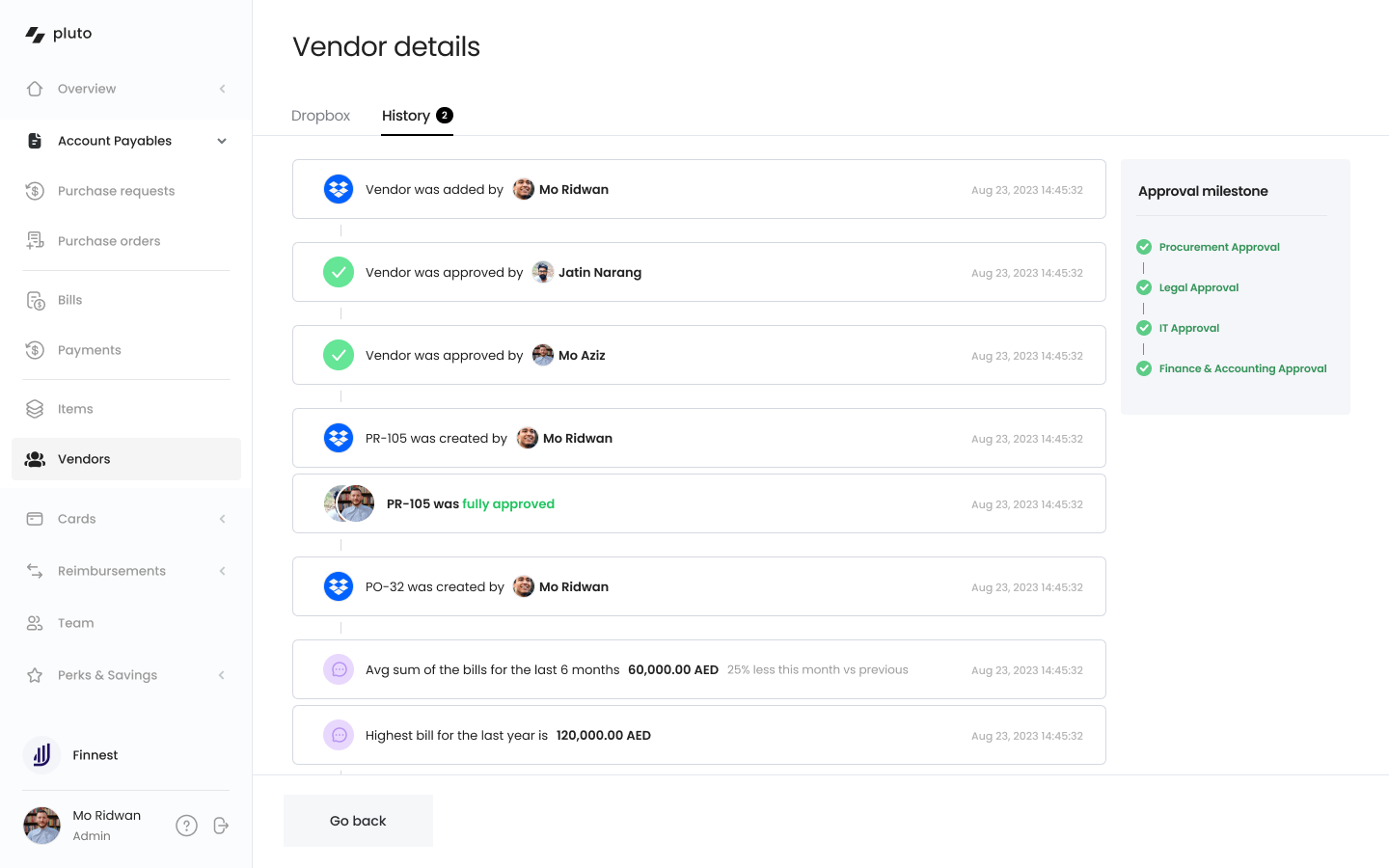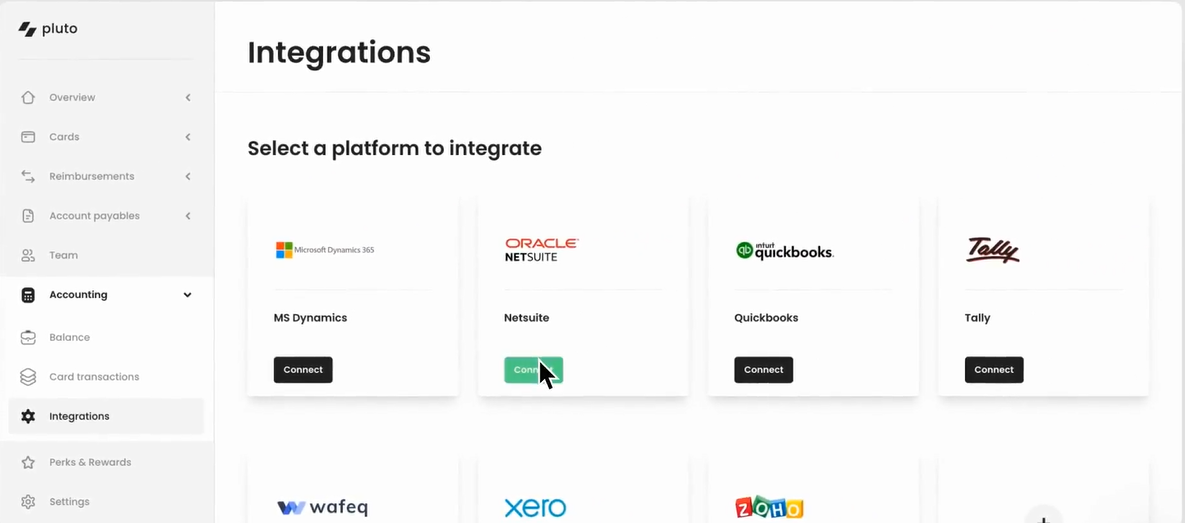As you bring more Software‑as‑a‑Service (SaaS) apps into your environment, controlling costs becomes more complex. Did you know organizations of various sizes use an average of 112 SaaS apps? Or that end-user SaaS spending is forecast to reach nearly $300 billion by 2025?
No wonder it’s so easy to lose track of purchases, renewals, and subscriptions. When you lack centralized visibility, you may end up paying for underutilized tools, duplicate applications, or renewals that no longer meet your needs.
Separate teams may procure software independently, which makes it harder to manage expenses and align them with business priorities. The result? Wasted resources and missed opportunities to redirect funds where they matter most.
To address this, SaaS spend management platforms can be helpful. They provide a unified view of the software stack, offering data that helps you manage approvals and make better purchasing decisions.
Keen to know more? In this blog post, you’ll learn what SaaS spend management means, the challenges involved, practical ways to improve it, and how the right software can help. We’ll also show how Pluto enables you to manage costs and renewals more effectively.
Understanding SaaS Spend Management
SaaS spend management is the practice of overseeing and controlling all the expenses your organization incurs on SaaS applications. It covers the full lifecycle—discovering which apps are in use, managing licenses, optimizing costs, and monitoring renewals and subscriptions.
The key benefits of SaaS spend management include:
1. Cost optimization
Instead of simply cutting unused licenses, you can consolidate overlapping tools, negotiate more favorable enterprise agreements, and plan renewals strategically. Over time, you’re not just trimming fat; you’re actively shaping a leaner, more future‑proof SaaS portfolio.
2. Strategic SaaS budgeting
You gain a single source of truth for all SaaS contracts, invoices, and usage. Instead of reacting to surprise renewals or overspending, you can forecast accurately and negotiate from a position of data‑backed strength.
3. Operational clarity and compliance
Unused or unmanaged SaaS apps not only drain the budget but also pose a potential entry point for data leaks and non‑compliance. By actively managing your SaaS stack, you enforce access controls, eliminate shadow IT, and maintain an audit-ready environment.
Challenges in SaaS Spend Management
As your organization scales its SaaS investments, new complexities around their management will emerge, including:
1. Complex pricing models
You’ve probably seen SaaS vendors offer pricing structures that look flexible but create operational headaches. Per‑user, consumption‑based, or tiered plans all require someone to reconcile usage against the plan you’re on constantly.
Without clear alignment between procurement, finance, and operational teams, you end up spending valuable time just managing invoices and ensuring charges match real activity.
Key Stat: 40% of organizations still track auto‑renewal dates manually, and many have experienced unintended renewals.
2. Shadow IT
When individual teams adopt tools without going through the standard process, it creates operational silos. Support teams don’t know what’s in use, security teams can’t monitor integrations, and there’s no clear escalation path if something breaks.
Over time, these hidden apps fragment workflows, making it harder to maintain consistent processes across departments.
Did You Know?: By 2027, 75% of organizations will experience security incidents traced back to shadow IT and unsanctioned SaaS apps.
3. Unmanaged renewals
Renewals that aren’t tracked centrally can result in more than just surprise charges.
They disrupt operational planning because you can’t schedule migrations, sunset tools, or plan vendor transitions in time. Suddenly, you’re scrambling to integrate a renewal into existing roadmaps or renegotiate under pressure because the renewal date slipped through the cracks.
Insight: Through 2026, organizations that lack formal processes to manage SaaS renewals will overspend on SaaS by at least 25%.
4. Vendor lock-in
When you rely on a single vendor, switching becomes a difficult task. Integrations, workflows, and training are tied to that provider, so switching to another solution requires significant changes across teams, data structures, and even customer-facing processes.
Data Point: 89% of enterprises are already using a multi‑cloud strategy—a move aimed at avoiding vendor lock‑in and maintaining flexibility across providers.
The Role of SaaS Spend Management Software
After examining the common challenges in managing a growing SaaS stack, the next step is to determine how to overcome them. Manually tracking renewals, licenses, and vendor terms isn’t sustainable. That’s where SaaS spend management software steps in.
The right platform provides you with the visibility and control you need, automates routine tasks, and enables you to make smarter, faster decisions about your software investments. Here are the key capabilities of a SaaS spend management software solution:
1. Centralized dashboards
You get a single, unified view of all your SaaS subscriptions, renewals, and contracts in one place. No more chasing spreadsheets, email chains, or multiple software tools to track subscriptions across various departments.
With a centralized view, you can quickly identify where money is being spent, pinpoint potential inefficiencies, and determine whether certain subscriptions or services need to be renegotiated or eliminated.
In Practice: Pluto aggregates all spend data into a single dashboard, providing you and your finance team with instant visibility into the total SaaS spend across the entire organization.
2. Automated license management
Instead of manually tracking which employees or departments are using which licenses, automated license management continuously monitors usage to ensure accurate allocation.
It ensures you only pay for the number of licenses being actively used, preventing unnecessary expenditure on unused or redundant software. You can quickly reassign idle seats, right‑size allocations, and make sure you’re only paying for what’s actively used.
In Practice: Pluto flags underused licenses and upcoming renewals, providing you with the data to provision software usage appropriately before waste accumulates.
3. Real‑time spend visibility and reporting
With real‑time insights, you’re not waiting for month‑end reports to discover overspend. You see exactly how much each tool costs as it happens.
Coupled with reporting and forecasting, you can break down costs by department or project, alerting your finance team when certain budget thresholds are approaching or have been exceeded.
In Practice: Pluto enables you to drill into live spend by team or tool for a given month and generate reports that highlight areas for optimization.


4. Contract and vendor management
All your contracts live in one secure location, complete with alerts for key dates and clear access to terms. You know precisely when renewals are coming up and can quickly retrieve relevant details, such as payment terms and service levels, enabling you to prepare for renegotiations or switching vendors without last-minute scrambling.
In Practice: Pluto automatically tracks contract milestones, such as trial period expirations or contract renewal deadlines, and sends alerts so your procurement or finance teams can take action before critical dates pass.
5. Automated approval workflows
With automated approval workflows, you can set up rules and triggers to approve, reject, or escalate SaaS purchases or renewals based on predefined criteria. This ensures that all your software purchases are authorized by the appropriate department or individual, reducing the likelihood of maverick spending and shadow IT.
In Practice: Pluto’s workflows enforce your approval process based on factors such as the department making the purchase or the software’s cost.
6. Expense categorization and tax alignment
This feature allows you to automatically classify your SaaS expenses according to predefined categories, such as marketing, sales, or IT. You can align your spend with accounting and tax systems, which saves you time during audits and ensures compliance from day one.
In Practice: Pluto utilizes automated categorization to classify SaaS spend according to internal tax codes, enabling you to reduce manual reconciliation efforts and stay compliant with tax regulations.
Selecting the Right SaaS Management Tool
There’s no dearth of SaaS spend optimization and management solutions with extensive feature lists. The key is to find a tool that fits your workflows today and scales with you tomorrow. As you evaluate platforms, keep the following factors in mind:
1. Align with your business needs
Begin by assessing how well a tool aligns with your specific environment. Considering your company size, industry, and operating regions will shape what you need.
For example, if you work in a regulated industry such as healthcare or finance, look for built-in compliance reporting and detailed audit trails. If you run operations across multiple regions, multi‑currency support and localized tax compliance become non‑negotiable.
Expert Insight: Pluto offers extensive flexibility to accommodate businesses of different sizes and complexities, whether for small startups or large enterprises. It integrates seamlessly with your existing ERP, accounting systems, and financial processes, ensuring smooth implementation and operation.

2. Evaluate features that matter most
The right platform should do more than simply track subscriptions. Prioritize tools that include automated license management, ensuring usage remains aligned with actual demand and renewals are based on real consumption.
Real-time spend visibility is equally important, providing you with the insight to spot issues early and adjust before costs escalate. Additionally, flexible reporting enables you to break down spend by department, tool, or vendor, making it easier to identify underutilized licenses and redundant subscriptions.
Expert Insight: Pluto combines these capabilities, offering live spend tracking, automated renewal alerts, and granular reporting to help you continuously refine your SaaS portfolio.
3. Consider scalability and vendor support
Your SaaS stack will evolve and shift as your business grows and changes. Choose a tool that can scale without forcing you to rebuild processes later. Just as necessary, make sure any issues with the platform are promptly addressed.
The vendor should be able to provide timely support, onboarding, and customer success services to help you maximize the tool’s potential.
Expert Insight: Whether you’re a small business or a large enterprise, Pluto offers a user-friendly interface and cloud-based architecture to efficiently manage a growing number of subscriptions and complex vendor relationships.
4. Ensure seamless integration
The SaaS management solution should become an integral part of your daily processes, rather than a standalone tool that requires extra effort to operate. It should come with prebuilt integrations with your accounting software, ERP, or procurement systems. API support is a plus, allowing you to sync data automatically and reduce manual entry.
Expert Insight: Pluto integrates with platforms such as NetSuite, QuickBooks, and Xero, offering APIs for automatic reconciliation, expense categorization, and accurate budget forecasting.

5. Prioritize security and compliance
With sensitive financial data involved, having robust security measures in place is a must. Choose a platform that meets industry standards for data protection, provides clear access controls, and maintains audit trails for compliance with relevant regulations.
For example, if your organization operates in the UAE, it must comply with the UAE’s Personal Data Protection Law (PDPL), which requires businesses to safeguard personal and financial data.
Similarly, if you are in the US, ensuring compliance with the Sarbanes-Oxley Act (SOX) is essential for publicly traded companies.
Expert Insight: Pluto is designed to meet strict regional standards. In the UAE, it supports local compliance requirements, multi‑currency transactions, and integrations with regional ERP systems. In the US and beyond, it delivers industry‑leading security with PCI DSS Level 1 certification, regular penetration testing, and global compliance features.
6. Look for ease of use and adoption
The most powerful tool won’t deliver value if no one uses it. A clean, intuitive interface and mobile‑friendly features make adoption easier across teams. Minimal training should be required, and approval workflows should feel simple, not bureaucratic.
Expert Insight: Pluto’s mobile‑first design and intuitive workflows make it easy for employees and managers to track SaaS usage, submit receipts, and request approvals without complicated procedures.
7. Weigh Cost Against Long‑Term Value
Price is often a decisive factor when selecting a SaaS management tool, and for a good reason—it should pay for itself through insights and efficiencies. Consider the long-term ROI that the tool will provide through reduced waste, time saved, and better decision‑making.
Expert Insight: Pluto’s flexible pricing scales with your needs, and the savings it uncovers across your SaaS stack often outweigh the cost of the platform itself.
📌 Case Study: SmartCrowd Saves 40 Hours a Week With Pluto
SmartCrowd, a fractionalized property investing platform, struggled to manage expenses for over 100 properties using a single credit card and manual spreadsheets.
After adopting Pluto’s corporate cards and expense insights, they gained visibility at a per‑property level. The team now saves around 40 hours each week and reports expenses far more accurately.
Emerging Trends in SaaS Spend Management
As organizations continue to navigate the complexities of managing SaaS expenditures, several trends are shaping the landscape in 2025:
1. AI-powered spend optimization
Artificial Intelligence (AI) is increasingly integrated into SaaS cost management platforms to provide predictive analytics, anomaly detection, and automated recommendations. These AI-driven tools help you anticipate future spending patterns, identify underutilized subscriptions, and optimize license allocations.
Example: Coupa’s AI-powered platform analyzes over $7 trillion in spend data to provide actionable insights and recommendations, helping organizations reduce costs and improve efficiency.
2. Usage-based pricing models
Traditional per-user or per-seat pricing models are being replaced by usage-based pricing, especially as AI and machine learning capabilities become more prevalent. This shift allows organizations to pay for what they use, aligning costs with actual consumption.
Example: Companies like Vercel and Replit have adopted usage-based pricing models, charging customers based on metrics such as tokens consumed or queries executed, to align revenue with infrastructure costs better.
3. Integration of FinOps practices
Financial Operations (FinOps) practices are being integrated into SaaS expense management to bridge the gap between finance, operations, and engineering teams. This collaboration ensures that cloud spending is optimized and aligned with business objectives.
Example: The ABACUS framework leverages FinOps principles to optimize cloud costs by setting budgets, enforcing them through blocking new deployments, and alerting teams if spending breaches a budget threshold.
Streamline Your SaaS Spend Management with Pluto
Managing SaaS expenses has become a core responsibility for every growing organization. You deal with renewals, licenses, and vendor relationships that are constantly changing, and you need a straightforward way to track your spending and identify areas for savings.
Teams that approach this with discipline have better control, fewer surprises, and stronger financial results.
Pluto is built for that mindset.
The platform gives you a centralized view of your subscriptions, automated workflows to manage renewals and approvals, and AI‑powered analytics to guide decisions.
It supports multi-currency transactions and local compliance in the UAE, and it meets the strict security and integration requirements of organizations in the US and other markets.
With Pluto, you can track usage, identify waste, and act on data with confidence. Your team stays informed, your software portfolio becomes easier to manage, and you free up time and budget for priorities that drive growth.
Ready to manage SaaS spend efficiently?
Book a demo with Pluto and start managing your SaaS spend with clarity and control.
Frequently Asked Questions (FAQs)
1. Does Pluto support custom approval processes for different spend types?
Yes. Pluto’s ApprovalFlow lets you build rules based on amount, department, vendor, or any custom criteria. You can set parallel or multi-step approvals, and the system automatically routes and escalates requests accordingly.
2. How quickly can my team implement Pluto without disrupting existing workflows?
Most customers are up and running in under 60 days. Pluto’s workflows and integrations are designed to enable finance teams to configure approvals, custom fields, and policies themselves—no complex IT projects are required.
3. What are some best practices for building stronger SaaS spend management controls?
For starters, maintain a live inventory of all SaaS contracts, including renewal dates and usage data, so you can take action early on renewals instead of reacting at the last minute. Review usage patterns regularly to spot tools that are under‑adopted or overlapping with others, and decide to reassign, consolidate, or retire them.
It also helps to tie each subscription to an owner within the business who is responsible for monitoring adoption, value, and compliance throughout the lifecycle.
.png)

.webp)
.png)


%20(1).webp)











